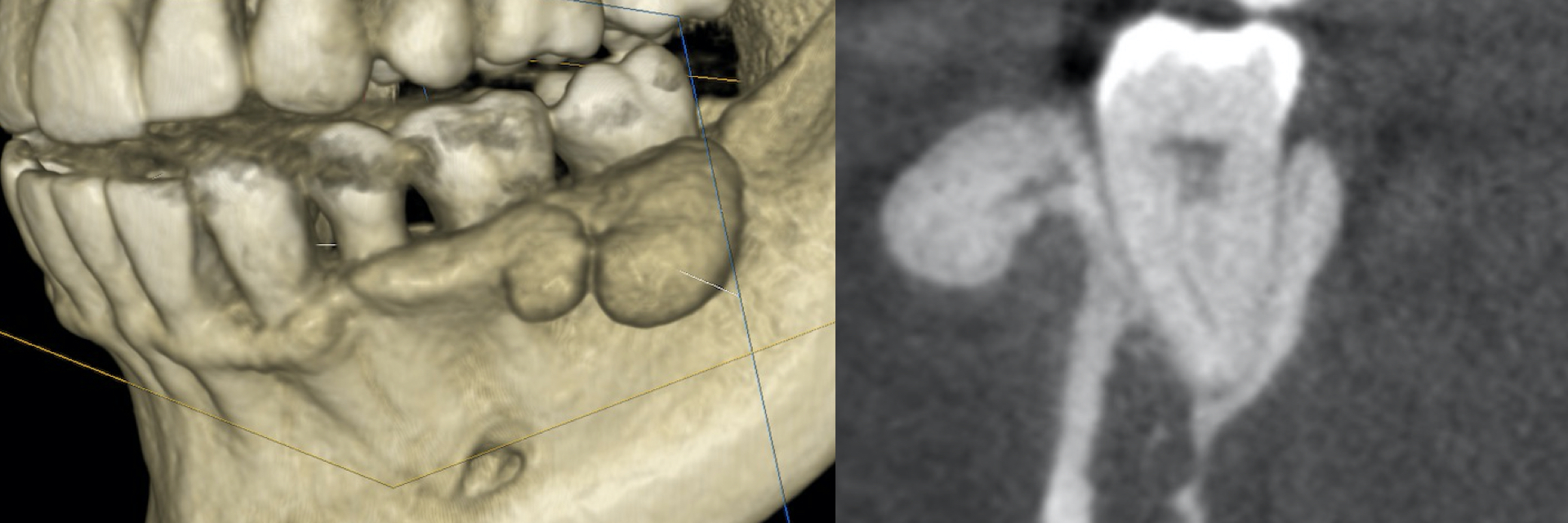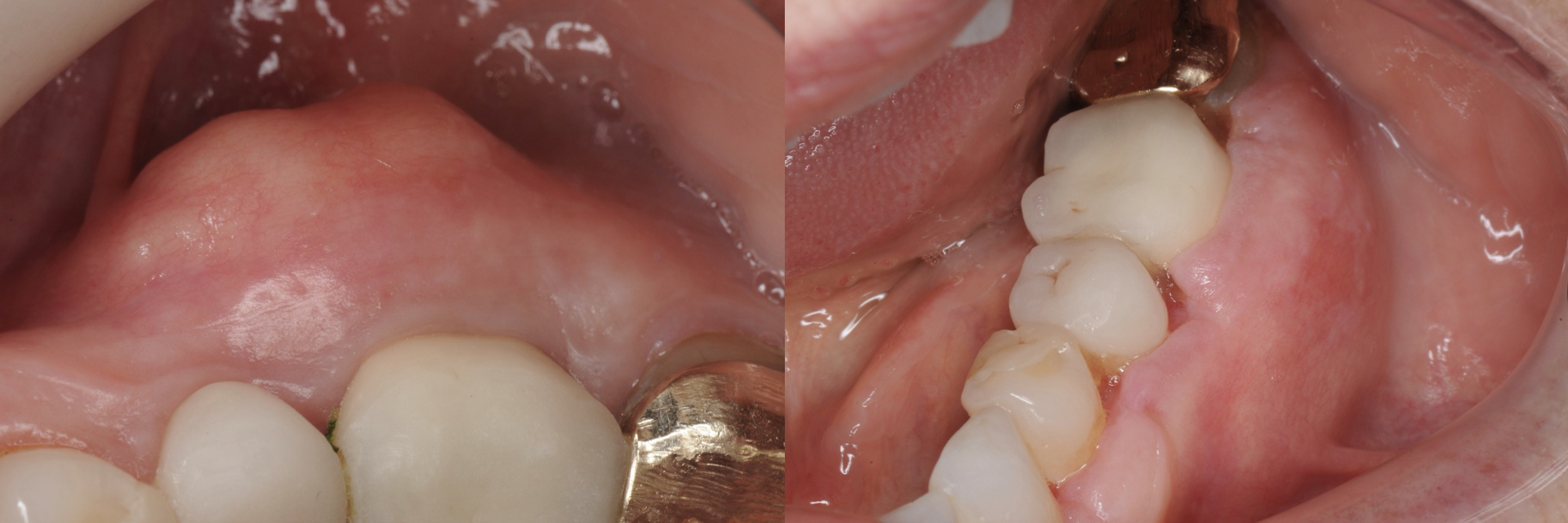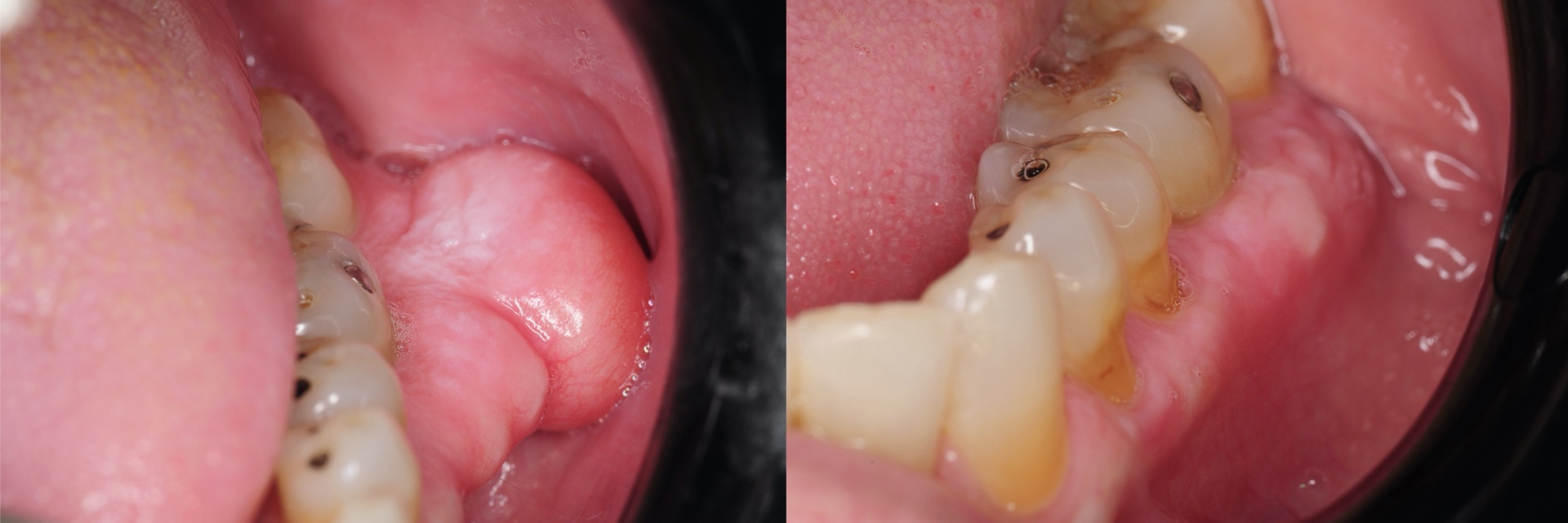The Story:
In this portfolio, we share a series of patients who presented with areas of excessive bone growth in their lower jaw bone. Such bony growths are known as exostosis and tori (when occurs in the inner surface of the jaw bone.)
Exostosis and tori are congenital anomalies and are completely benign.
The indications for removal of exostosis or tori are frequent traumatic irritation during eating which can cause pain or ulcers. The constant stimulus from this traumatic irritation can lead to bone apposition resulting in its apparent growth.
Exostosis or tori are excellent sources of autogenous bone when necessary for bone grafting in other sites of the mouth. For example, if a patients needs dental implants but has inadequate bone, the removed exostosis or tori bone can be used as a graft.
Treatment:
For diagnosis, a CBCT (cone beam CT scan) should be obtained to assess exact dimensions and distance from adjacent roots as well as the relationship between the exostosis and the mental nerve (a sensory nerve that exits the lower jaw bone).

Treatment involves surgical reduction of the bony growth. The procedure can be done quite atraumatically with rapid recovery using minimally-invasive techniques:
- Gentle reflection of the gum tissue
- Gross removal of extra bone using Piezo osteotomy tips
- Fine removal and re-shaping of bone using Piezo sculpting tips
- Final smoothing of the site using mini-bone files
- Closure of gum tissue using resorbable sutures
The gum tissue heals gradually over 4-6 weeks. Placement of platelet-rich fibrin can enhance the healing and rate of maturation. Post-operative pain usually lasts for 2-3 days and can be well managed with Ibuprofen / Tylenol.
Examples:




